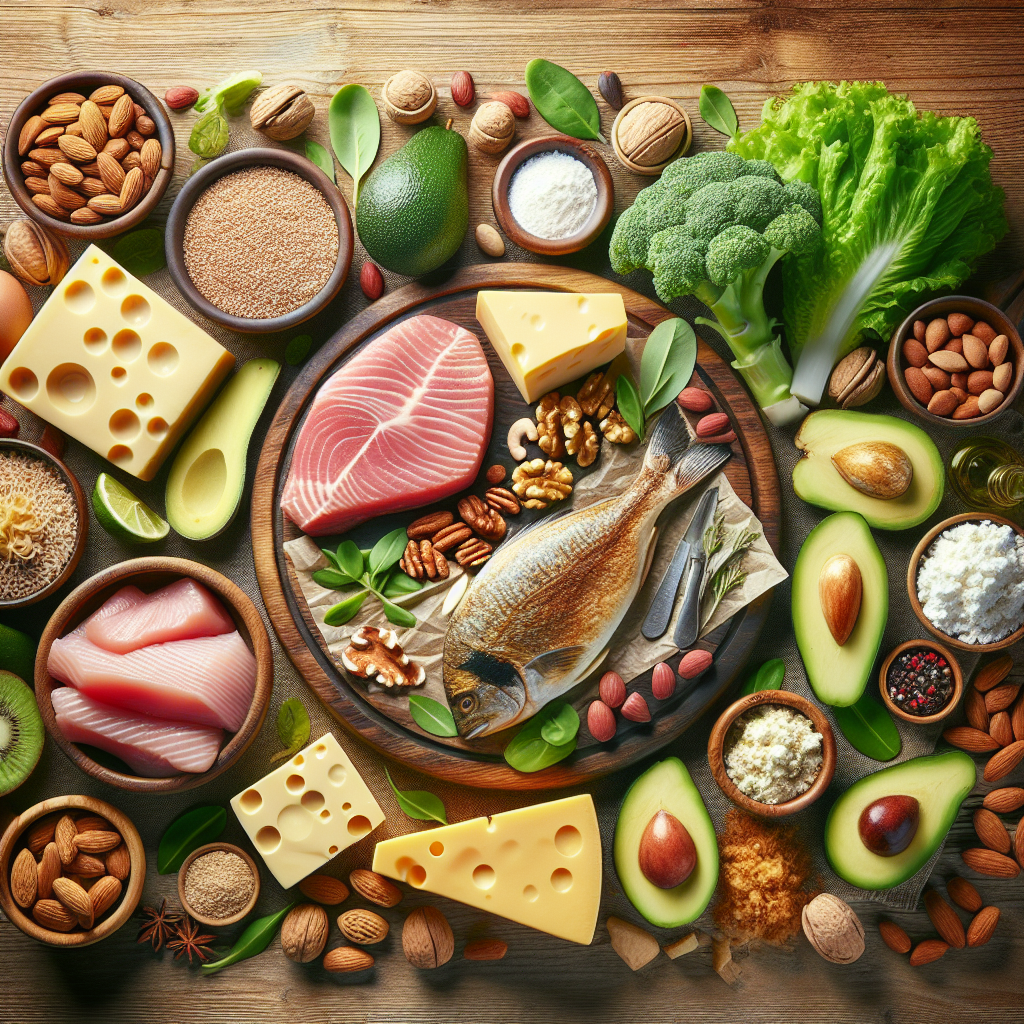
The keto diet, a regimen high in fats and low in carbohydrates, has gained significant traction in the wellness community for its potential weight loss and health benefits. The basic premise revolves around pushing the body into a state of ketosis, where fat is burned for fuel in the absence of carbs, the body’s usual source of energy. This shift not only aids in reducing body fat but may also lead to improved energy levels and mental clarity for some individuals.
If you’re curious about how the keto diet works, you’re not alone. It’s a topic that’s captured the interest of health enthusiasts and researchers alike. By reducing carbohydrate intake to typically less than 50 grams per day, the body is forced to look for an alternative energy source, leading to the production of ketones from stored fats. This process can have profound effects on your metabolism and overall health.
At hackyourbiology.com, we delve into the latest research and real-world experiences to bring you comprehensive insights into the keto lifestyle. Sign up for our Weekly Newsletter so you don’t miss any important articles. We promise not to SPAM you.
The Science Behind Ketosis and Weight Loss
Delving into the science of ketosis reveals why the keto diet can be an effective weight loss tool. When the body enters ketosis, it’s a clear sign that it has begun to use fat as its primary source of energy. This metabolic state is achieved when carbohydrate intake is drastically reduced, and the body’s glycogen stores are depleted. As a result, the liver starts converting fats into fatty acids and ketone bodies, the latter of which serve as an alternative energy source for the brain and other organs.
During this transition, the body becomes incredibly efficient at burning fat for energy, which can lead to a reduction in body fat percentage. Moreover, the presence of ketones in the blood can lead to a decrease in appetite, which naturally reduces calorie intake and further supports weight loss efforts. Additionally, studies have suggested that a ketogenic diet can increase the rate of fat oxidation and preserve lean body mass during weight loss, making it a favorable diet for those looking to improve body composition.
It’s important to note that while the concept of ketosis is straightforward, individual responses to the keto diet can vary. Factors such as genetics, overall health, and adherence to the diet all play roles in how effectively one might lose weight while in ketosis.
Macronutrient Ratios on a Keto Diet

The cornerstone of understanding how the keto diet works is grasping the importance of macronutrient ratios. A typical ketogenic diet drastically skews the balance of macronutrients to favor fats, with a significant reduction in carbohydrates and a moderate intake of protein. The ratios are critical to kick-starting and maintaining ketosis, the metabolic state where the body efficiently burns fat for fuel.
Generally, the macronutrient distribution for a standard keto diet follows a pattern of around 70% to 80% fat, 15% to 20% protein, and 5% to 10% carbohydrates. This equates to an intake of roughly 20 to 50 grams of carbohydrates per day, depending on individual factors like age, activity level, and metabolic health. It is essential to note that these percentages are not set in stone and can be adapted to suit individual goals and responses to the diet.
Fats should come from healthy sources such as avocados, nuts, seeds, and olive oil, while protein intake should be moderate to prevent gluconeogenesis, a process where excess protein is converted into glucose, which could potentially interrupt ketosis. Low-carbohydrate vegetables and high-fiber foods are encouraged to help meet the small carbohydrate quota, providing essential nutrients and maintaining gut health.
Monitoring these ratios is crucial, as any significant deviation can disrupt ketosis and affect the efficacy of the diet. This underscores the importance of planning and tracking food intake to ensure that the macronutrient balance aligns with the stringent requirements of the ketogenic diet.
Potential Health Benefits Beyond Weight Loss
While weight loss is often the primary goal for many embarking on the ketogenic journey, research has uncovered a multitude of potential health benefits beyond just shedding pounds. Understanding how the keto diet works to impact various aspects of health is essential for those considering this dietary approach.
Improved Cardiac Health: A keto diet can lead to a reduction in factors associated with heart disease, including high blood pressure and triglyceride levels. Some studies have shown that the increase in healthy fats can improve cholesterol levels by decreasing LDL (bad cholesterol) and increasing HDL (good cholesterol).
Enhanced Brain Function: Ketones produced during ketosis are a potent fuel for the brain. They may improve cognitive function and have been studied for their potential to alleviate symptoms of neurological disorders such as epilepsy, Alzheimer’s, and Parkinson’s diseases.
Better Blood Sugar Control: By minimizing carbohydrate intake, the keto diet can help stabilize blood sugar levels, which is particularly beneficial for individuals with type 2 diabetes. This effect can lead to a reduced need for insulin and other glucose-lowering medications.
Anti-Inflammatory Effects: The reduction of carbohydrate intake on a keto diet can also lower inflammation in the body. Inflammation is a key driver of many chronic diseases, so this effect could have far-reaching health implications.
It’s important to note that while these potential benefits are promising, the keto diet may not be suitable for everyone, and long-term adherence to such a restrictive diet can be challenging. Consultation with healthcare professionals is advised to tailor the diet to individual health needs and to monitor any changes in health markers.
Understanding the Risks and Side Effects

Despite its popularity, the ketogenic diet comes with several potential risks and side effects that individuals must be aware of before starting. How the keto diet works can lead to significant changes in the body, and not all of them are positive for everyone.
Keto Flu: As the body adjusts to ketosis, some people experience flu-like symptoms, including headache, fatigue, dizziness, and irritability. These symptoms typically resolve after the initial adaptation period.
Nutrient Deficiencies: The restrictive nature of the keto diet can lead to deficiencies in essential vitamins and minerals, particularly if the diet is not well-planned. It’s important to ensure a varied intake of nutrient-dense foods to mitigate this risk.
Liver and Kidney Stress: Processing high amounts of fats and proteins can put additional strain on the liver and kidneys, potentially exacerbating pre-existing conditions.
Constipation: The reduced intake of fibrous carbohydrates like whole grains, fruits, and vegetables can lead to digestive issues such as constipation.
Heart Health Concerns: While some studies suggest keto can improve heart health markers, there’s a concern about the long-term impact of high saturated fat intake on heart health, especially for individuals with a history of heart disease.
It’s essential for those considering the keto diet to approach it with caution and ideally under the guidance of a healthcare professional who can monitor health indicators and ensure nutritional adequacy. Personalizing the diet to fit individual health profiles and goals is key to minimizing risks and side effects.
Practical Tips for Starting a Keto Diet
If you’re considering the ketogenic diet, it’s important to start off on the right foot to maximize your chances of success and minimize potential risks. Here are practical tips to help you understand how the keto diet works and to kick-start your journey:
- Consult a Healthcare Professional: Before making any significant dietary changes, especially one as drastic as keto, it’s crucial to consult with a healthcare provider or a registered dietitian.
- Plan Your Meals: Planning ahead can help you avoid the temptation of high-carb foods and ensure you have the right ingredients for keto-friendly meals.
- Hydrate and Replenish Electrolytes: A higher intake of water and electrolytes like sodium, potassium, and magnesium can help prevent side effects such as the ‘keto flu.’
- Start with Whole Foods: Focus on high-quality, whole-food sources of fats and proteins, such as avocados, nuts, seeds, and lean meats.
- Track Your Macros: Use a food tracking app to monitor your intake of carbohydrates, fats, and proteins to ensure you’re staying within keto guidelines.
- Be Patient: It takes time for your body to adapt to ketosis. Give yourself grace during the transition period.
Remember, the key to success with the keto diet is sustainability. Make changes that you can maintain long-term and listen to your body throughout the process. If you find the diet isn’t working for you, don’t hesitate to adapt or consider alternative options that better suit your lifestyle and health needs.
For more insights and up-to-date information on how the keto diet works and other health and wellness topics, don’t forget to sign up for our Weekly Newsletter so you don’t miss any important articles. We promise not to SPAM you.